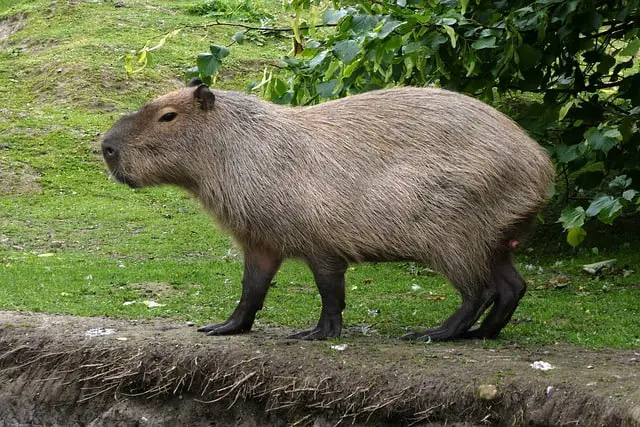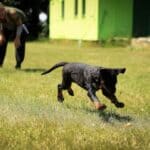
The capybara is a rodent native to tropical areas of South America. It loves to live close to rivers and lakes and, due to its docile character, it has often been captured to make it a pet and occasionally consume its meat.
In Argentina, capybara farming is particularly flourishing ( around 400 tons of meat are produced each year ).
Fortunately, in Italy it is no longer allowed to breed or raise capybaras , not even as a companion animal or pet , since 1996. The animal is in fact in the list of wild and dangerous species.
Capybara: history
To meet the needs of Native Americans, the Catholic Church asserted, in the eighteenth century, that capybara meat could be similar to that of fish, and therefore consumable during Lent .
Its meat actually tastes very similar to that of pork ; but to date the animal is still captured, both in southern Brazil, Uruguay and northern Argentina, also for its skin and bristles.
Capybara: characteristics
Capybara is a vegetarian . In fact, it prefers aquatic grasses and tree barks, but also corn, sugar cane, tubers and occasionally fish. In fact, its common name means “grass eater”.
It will also be the fault of their teeth, up to 8 cm long, which, like other rodents, have continuous growth. A curiosity: they are easy to identify, as they are often considered “the chairs” of the animal world . It is not unusual to find capybaras in the company of birds, monkeys and rabbits , perched on their back!
The scientific one, on the other hand, combines the Greek words “pig” and “water” . Perhaps it will also be the fault of his not very graceful physique, capable of weighing up to 70 kg, and of his great ability as a swimmer . The adult capybara can reach a length of 105-135 cm; the stocky features and the massive build are paired with a heavy head and a truncated and square muzzle.
The upper lip has a deep incision, and the eyes are protruding and particularly distant. The ears are small, as is the tail, characterized by a coat of bristly, short and sparse brown bristles . The limbs are also short, with strong nails and robust and partly webbed fingers : four are arranged in the front legs, three in the hind ones.
Capybara: behavior
The capybaras tend to live in groups and shelter in the vegetation, which they use especially in the productive period. They have very fine hearing and smell, which they use to hide from predators (in water), typically jaguars, alligators, eagles, caimans and anacondas. In fact, they have remarkable and multiple aquatic habits : they use swamps, lakes and streams to look for food, stay immersed in them and sleep.
Their rather mild character leads them to spend several hours of the day “on the lookout”. They stay motionless on the banks for a long time looking around, or they love to graze and roll around in muddy pools , which are also useful for protecting the areas of sparse hair from solar radiation. They tend to be diurnal and territorial, they tend to act more at night if in close contact with Man.
Females give birth to 4 to 8 pups who breastfeed in a sitting position . The young are able to follow the mother already a few hours after giving birth, but only become independent several months later. By the fifteenth month, they reach sexual maturity. Adults can live up to 12 years.






